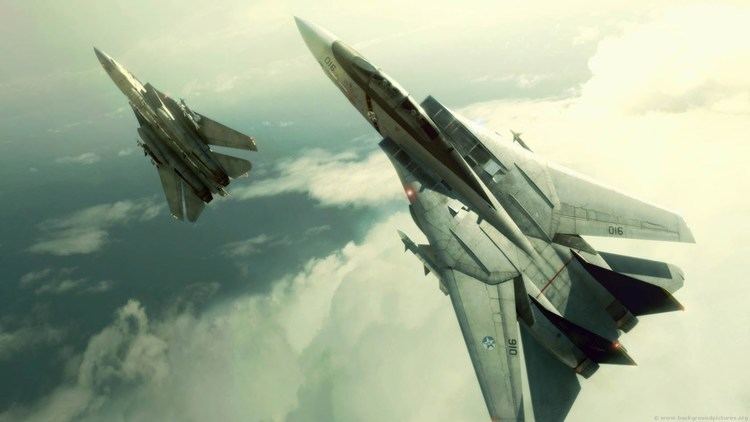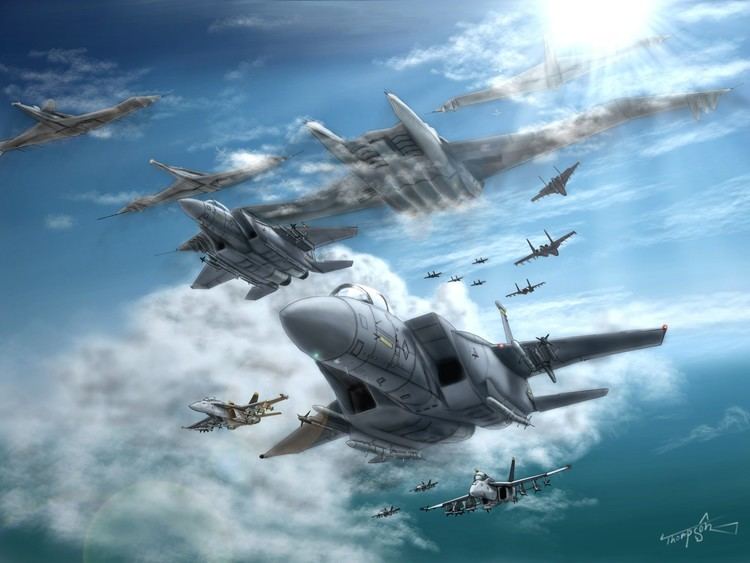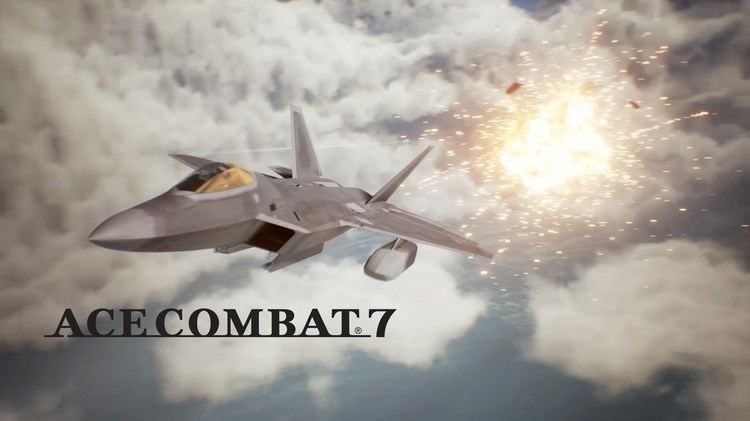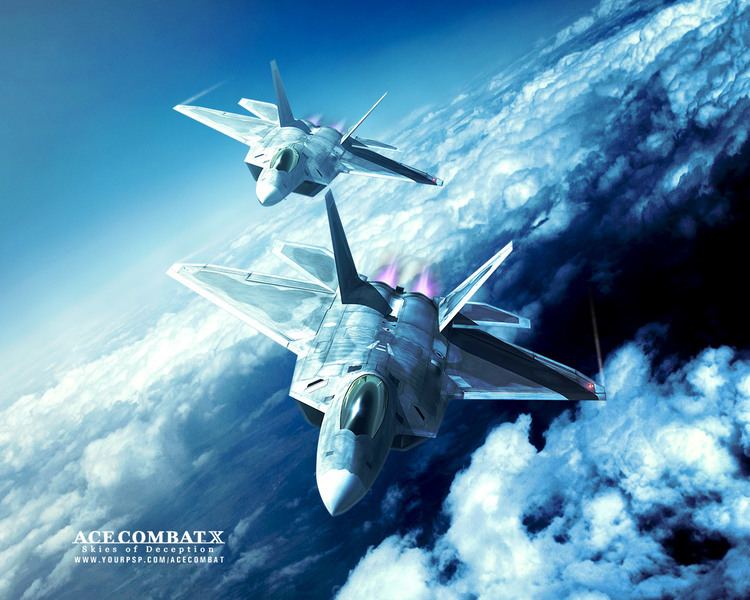Genre Combat flight simulator | Platform of origin Arcade | |
 | ||
Genres Combat flight simulator Developers Access GamesNamcoProject Aces Platforms ArcadeGame Boy AdvanceiOSMicrosoft WindowsNintendo 3DSPlayStationPlayStation 2PlayStation 3PlayStation 4PlayStation PortableXbox 360Xbox One First release Air CombatDecember 1992 Games Ace Combat 7: Skies Un, Ace Combat Infinity, Ace Combat: Assault H, Ace Combat: Assault H, Ace Combat: Joint Ass | ||
History of ace combat 1992 2016
Ace Combat (エースコンバット; Ēsu Konbatto) is a hybrid flight simulation action video game series featuring 18 games published by the Japanese company Namco Bandai Games and produced by Project Aces, an internal development team. The series emphasizes fast-paced action and dramatic plots, and has established itself as one of the most successful arcade flight action franchises.
Contents
- History of ace combat 1992 2016
- Ace combat 7 playstation experience 2016 trailer ps4 psvr
- Setting
- Title differences
- Music
- Models
- Printed media
- References

Most games of the series take place in the same fictionalized world populated with fictional countries with details loosely based on real-life location, events, and wars. One of the main selling points of the series is the ability to pilot a range of aircraft that include accurate or slightly modified representations of present-day military aircraft, prototypes that never saw actual battle, and completely fictional boss-type superweapons. Longtime fans of the series are rewarded with small hints of the continuity between the games, as some characters and events are referenced from one game to another.

The first three titles in the series were released on the Sony PlayStation system: (Air Combat also known as Ace Combat in Japan, Ace Combat 2 and Ace Combat 3: Electrosphere). Three subsequent titles were released on the PlayStation 2: (Ace Combat 04: Shattered Skies, Ace Combat 5: The Unsung War and Ace Combat Zero: The Belkan War). Two titles were released on the PlayStation Portable: Ace Combat X: Skies of Deception and Ace Combat: Joint Assault. One title was released on the Xbox 360: Ace Combat 6: Fires of Liberation. Ace Combat Xi: Skies of Incursion was released on the Apple iOS in 2009. Ace Combat: Assault Horizon was released for the PlayStation 3, Xbox 360, and Microsoft Windows, making it the only multiplatform title in the series. Ace Combat: Assault Horizon Legacy was released for the Nintendo 3DS. In 2013, they revealed Ace Combat Infinity, the first free-to-play title in the series, which was released in 2014 exclusive to the PlayStation 3. On December 5, 2015, the next main installment in the series, Ace Combat 7: Skies Unknown, was announced for the PlayStation 4, Xbox One and Steam.

Ace combat 7 playstation experience 2016 trailer ps4 psvr
Setting

With the exception of Ace Combat: Joint Assault, Ace Combat: Assault Horizon, and Ace Combat Infinity (all set in the real world), the franchise takes place in an Earth-like world dubbed Strangereal, with different geography and countries. The planet is also located in the same solar system as the real-life Earth, with the same Sun, Moon, and apparently constellations; one particular constellation, Crux, plays a major role in the plot of Ace Combat X: Skies of Deception. The only geographical similarities between Strangereal and the real-life Earth is that Antarctica covers the planet's South Pole, an archipelago shaped like New Zealand is near it, and there exists a Greenland-shaped country in the north aside which appears to be a part of Northern Canada. Strangereal also contains scattered and/or distorted Earth landmasses, such as a distorted Mediterranean near the equator, and Svalbard and Britain-like islands in the north. The longitude reading for the planet is based on a 360-degree system which is oriented west.
There are four major landmasses in Strangereal where most Ace Combat games are set and are separated by several major oceans and large seas, called Osea, Anea, Verusea, and Usea. Air Combat (after retconning), Ace Combat 2, Ace Combat 3: Electrosphere, and Ace Combat 04: Shattered Skies are all set in Usea. Ace Combat 6: Fires of Liberation takes place in Anea, just north of Verusea. Ace Combat 5: The Unsung War reveals the entire Strangereal world map for the first time, with its major combatants, the Osean Federation and the Union of Yuktobanian Republics, facing each other across the Ceres Ocean. The Atlantic Ocean is the largest ocean, touching Osea, Usea, and Verusa. The Cascade Ocean is the second largest ocean, touching Osea, Anea, and Verusa. The Arctic Ocean covers the North Pole, and the Pacific Ocean lies below the Ceres Ocean.
A main historic event that takes place in Strangereal is the fall of the large "Ulysses 1994XF04" asteroid. Its discovery in 1994 led to the creation of various superweapons to remove the threat of mass extinction of humans. Only one weapon, "Stonehenge", was completed and operational in time to destroy the asteroid by its arrival in 1999, but the asteroid's fragments spread out across the planet for sheer damage and loss of life. The asteroid is a main catalyst for the events of Ace Combat 04: Shattered Skies and Ace Combat 6: Fires of Liberation.
Title differences
The Japanese Ace Combat was renamed Air Combat in the North American and European releases of the original game.
In NTSC territories, the fourth installment of the series is known as Ace Combat 04: Shattered Skies, while in PAL territories the game is known as Ace Combat: Distant Thunder. The Spanish version of the game is known as Ace Combat: Trueno de Acero, which can be translated as Ace Combat: Steel Thunder. The NTSC version of the fifth installment of the game is known as Ace Combat 5: The Unsung War, while the PAL release was renamed Ace Combat: Squadron Leader. In PAL territories, the word "Zero" in Ace Combat Zero: The Belkan War was removed, making it the first game since the series introduction to not have a significant name change in PAL territories. Ace Combat: Assault Horizon Legacy in English-speaking territories was originally titled Ace Combat 3D: Cross Rumble in Japan.
Music
The Ace Combat series is known for its dramatic soundtrack, particularly in later installments of the game where full orchestras, such as the Warsaw Philharmonic Orchestra, are used. Each installment of the series usually uses one style of music as the basis of its soundtrack:
The main composers for the game series soundtrack are Keiki Kobayashi, Tetsukazu Nakanishi, Ryuichi Takada, Junichi Nakatsuru, and Hiroshi Okubo.
Models
Although typical aircraft model kits can be customized and detailed after specific planes in each game, the Ace Combat series also has its fair share of specially produced model kits, with a number of them sold as resin garage kits. In the late 1990s, the garage kit firm Reebhu Club joined forces with Tokiwa Aircraft Create to produce a 1/144 kit of the XFA-27 Phoenix from Ace Combat 2, following up with the R-101 Delphinus 2 in 1999, and then the ADFX-01/2 Morgan from Ace Combat Zero: The Belkan War in 2007. These kits were sold at Japan's Wonder Festival model kit convention.
Hasegawa sold 1/144 resin kits of Ace Combat 3: Electrosphere's Delphinus 1 and 3 in December 2000. It continued the trend with a 1:72 F-14 Ace Combat 5: The Unsung War limited-edition kit modeled in a cherry blossom paint scheme in April 2011 and a similarly-scaled kit of Assault Horizon's main superfighter, the ASF-X Shinden II, in July 2012, The line has since been followed by the F-22 Mobius 1 and Su-37 Yellow 13 from Ace Combat 04, the Grabacr SU-47 and F-14 Razgriz from Ace Combat 5, the Strigon Team Su-33 and F-15 Garuda 1 from AC6, and the Ridgebacks ASF-X from Infinity. Various items in the company's line of model aircraft kits are also available in special color schemes depicting characters from The Idolmaster franchise. These schemes are available as downloadable content for Ace Combat 6: Fires of Liberation.
In March 2006, Bandai produced a 1:100 kit of the ADF-01 Falken superfighter from Ace Combat 5: The Unsung War.
Printed media
The first serious attempt to detail part of the Ace Combat universe's history came with a detailed photo booklet included with the Japanese release of Ace Combat 3: Electrosphere in 1999. With the release of Assault Horizon in 2011, Project ACES created Aces At War: A History, a special artbook detailing the content from Ace Combat Zero, 4, and 5 from an in-universe perspective, as well as production commentary. This was packaged with the special editions of Assault Horizon released in Japan. In March 2012, ASCII Media Works released Ace Combat: Ikaros in the Sky. A tie-in novel for Assault Horizon, Ikaros is the story of series character Kei Nagase as she participates in the JASDF's ASF-X Shinden II fighter program.
